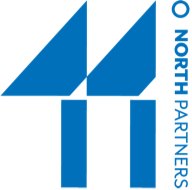The desire for collaboration reaches across sectors. Gilbert Probst of the World Economic Forum has called collaboration “the paradigm of the 21st century” based on the growing trend toward public-private partnerships in addressing complex environmental, social and economic challenges that single entities cannot solve on their own.
While collaboration can be as simple as the dictionary definition of “working with someone to create or produce something,” we think this definition from 99U gets closer to the heart of what most organizations are seeking when they set a goal of improved collaboration: “A collective approach that promotes accountability and cross-pollination, two critical forces in generating meaningful productive creative output.”
Based on our observations and experiences across the public, private and nonprofit sectors, we’ve identified five critical elements of healthy collaborative cultures:
- Shared purpose and values
When the organization’s reason for being – and its core beliefs – match up with the passion of its people, the foundation is set for effective collaboration. - Clear expectations and accountability
Top leaders must establish the expectation to collaborate – and hold people accountable. When this happens consistently, collaboration becomes the norm. When it doesn’t, credibility is lost. Employees believe what they see rather than what they hear. - Continuous two-way communication flow
When communication is viewed as a strategic imperative – and leaders value listening as much as speaking – obstacles can be removed or adjusted before they become debilitating limiters to innovation. - Risk-taking safety net
Organizations that use mistakes as learning opportunities and leaders who let employees know they have their backs strengthen the organization’s ability to generate meaningful productive creative output. - Organizational curiosity
When the organization’s top leaders are curious about their industry and the world – and model healthy collaboration themselves – they set a tone that inspires and motivates the organization to get better and better.
